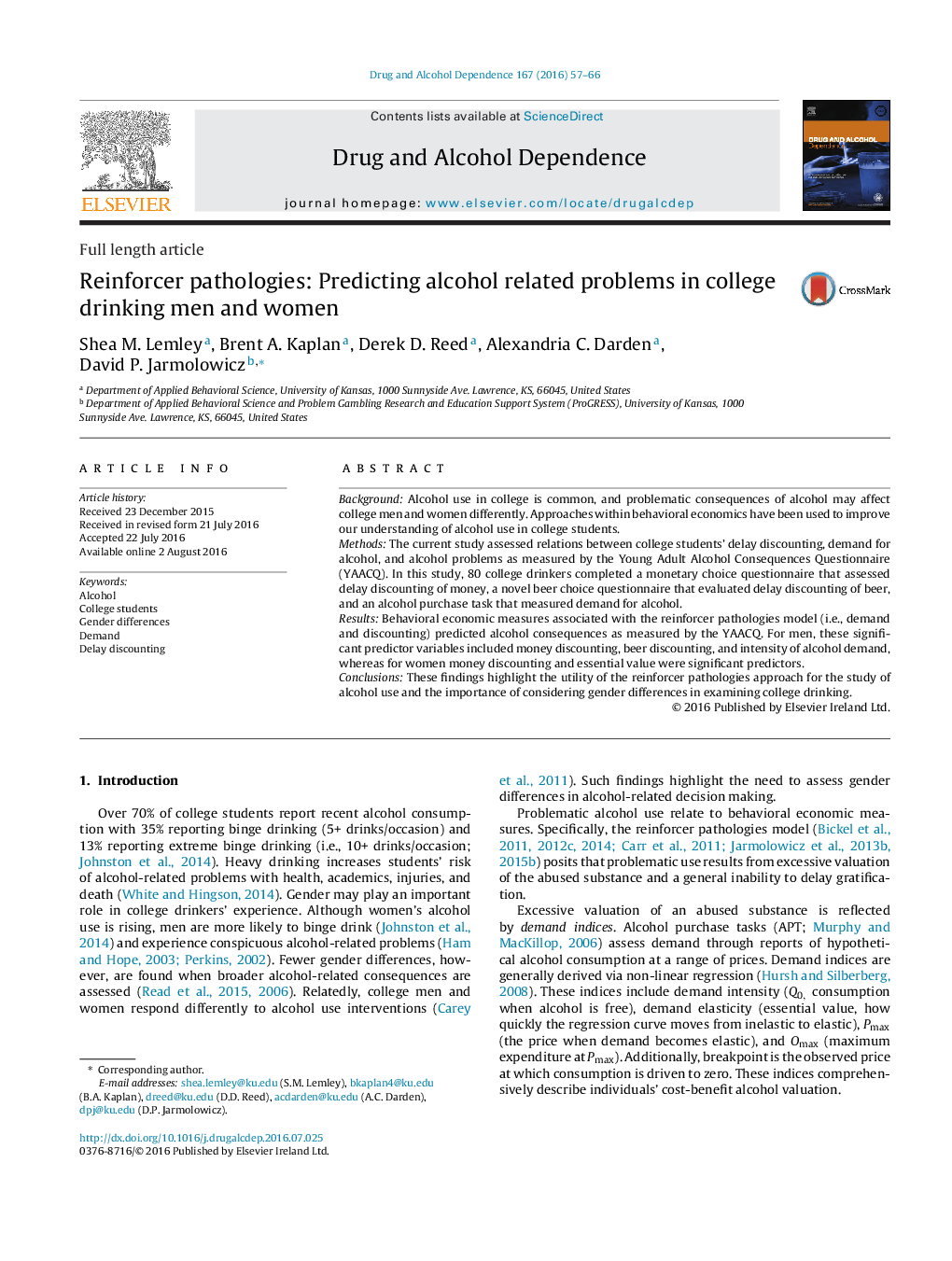| Article ID | Journal | Published Year | Pages | File Type |
|---|---|---|---|---|
| 5120495 | Drug and Alcohol Dependence | 2016 | 10 Pages |
â¢Reinforcer pathologies model used discounting and demand to study alcohol problems.â¢Behavioral economic measures predicted alcohol-related consequences.â¢Essential value and delay discounting of money were predictive for college women.â¢Intensity, money discounting, and beer discounting were predictive for college men.
BackgroundAlcohol use in college is common, and problematic consequences of alcohol may affect college men and women differently. Approaches within behavioral economics have been used to improve our understanding of alcohol use in college students.MethodsThe current study assessed relations between college students' delay discounting, demand for alcohol, and alcohol problems as measured by the Young Adult Alcohol Consequences Questionnaire (YAACQ). In this study, 80 college drinkers completed a monetary choice questionnaire that assessed delay discounting of money, a novel beer choice questionnaire that evaluated delay discounting of beer, and an alcohol purchase task that measured demand for alcohol.ResultsBehavioral economic measures associated with the reinforcer pathologies model (i.e., demand and discounting) predicted alcohol consequences as measured by the YAACQ. For men, these significant predictor variables included money discounting, beer discounting, and intensity of alcohol demand, whereas for women money discounting and essential value were significant predictors.ConclusionsThese findings highlight the utility of the reinforcer pathologies approach for the study of alcohol use and the importance of considering gender differences in examining college drinking.
